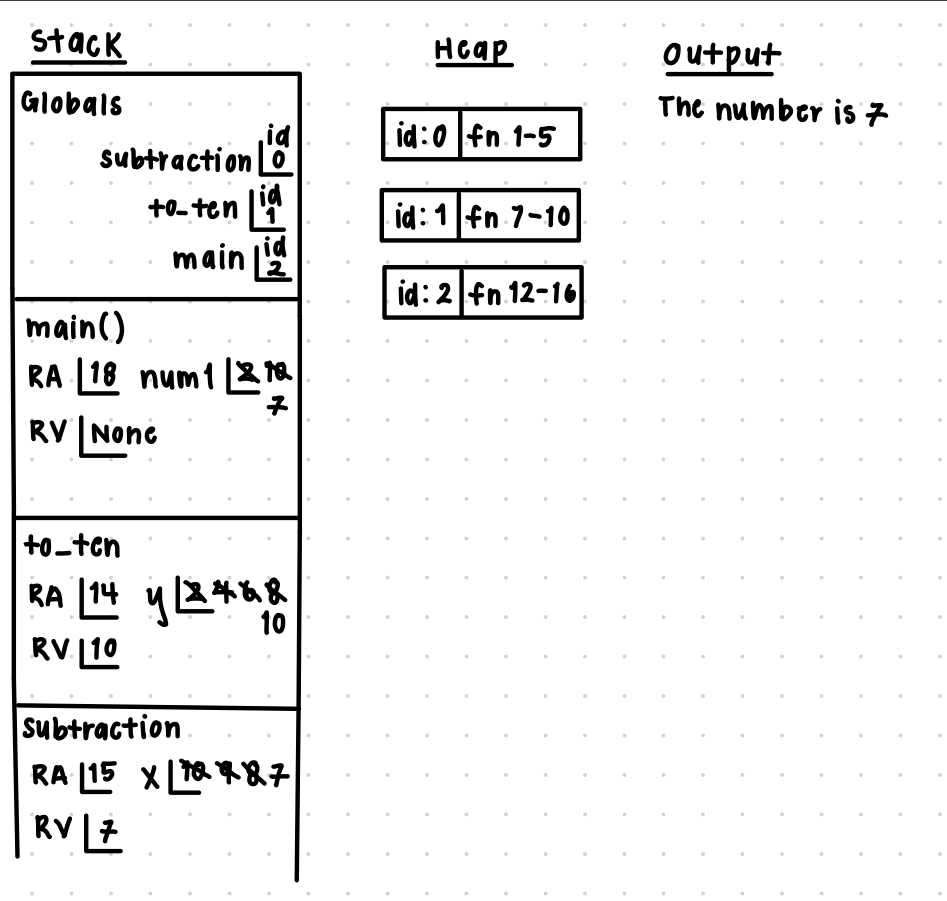Snippet
def subtraction(x: int) -> int:
if not x == 10 or x > 8:
while x > 7:
x -= 1
return x
def to_ten(y: int) -> int:
while y < 10:
y += 2
return y
def main():
num1: int = 2
num1 = to_ten(num1)
num1 = subtraction(num1)
print(f"The number is {num1}")
main()
Solution

Image Description The Memory Diagram has three columns from the left to the right, including the Stack, the Heap and the Output.
The Stack has 4 frames in the following order from top to bottom including, Globals, main, to_ten, subtraction.
The Globals frame has 3 variables including subtraction, to_ten, and main.
- subtraction has id 0, it is function on the heap, from lines 1-5
- to_ten has id 1, it is a function on the heap from lines 7-10
- main has id 2, it is a function on the heap from lines 12-16 The main frame has 3 items, including num1, RA, and RV.
- num1 is defined as 2 initially, but changes to 10 after the frame to_ten finishes, and changes to 7 after the frame subtraction finishes
- RA is defined at line 18
- RV is none
The to_ten frame has 3 items, including y, RA, and RV.
- y is initially 2, but changes to 4, then 6, then 8, then 10.
- RA is defined at line 14
- RV is 10
The subtraction frame has 3 items, including x, RA, and RV.
- x is initially 10, but changes to 9, then 8, then 7.
- RA is defined at line 15
- RV is 7
The Heap includes 3 function objects The Output includes the phrase: “The number is 7”